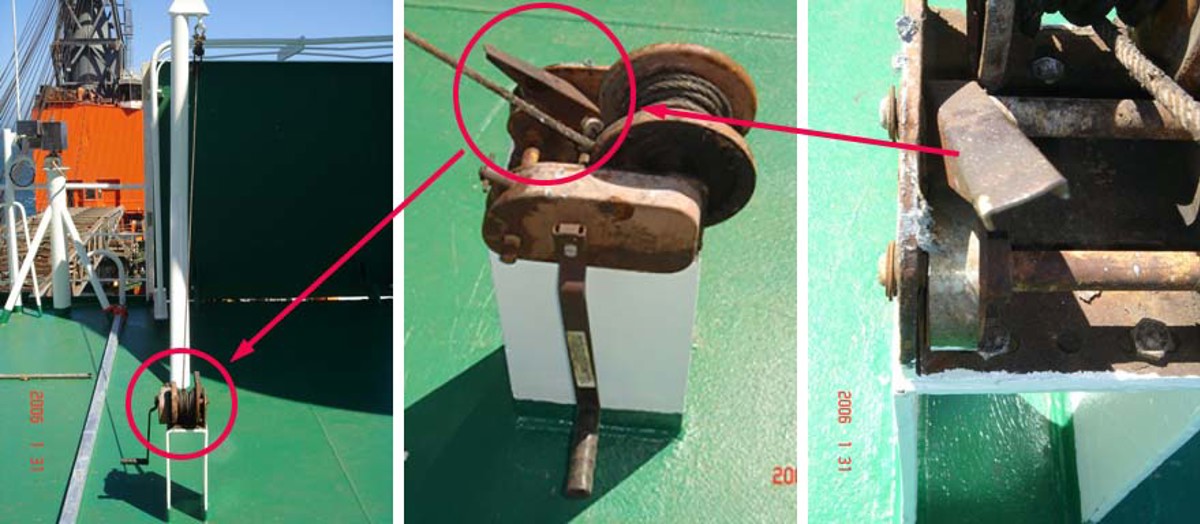Wrist injury sustained during vessel maintenance
- Safety Flash
- Published on 31 March 2006
- Generated on 14 July 2025
- IMCA SF 04/06
- 2 minute read
Jump to:
IMCA has received a report on an incident wherein a member of a vessel crew sustained wrist injuries during maintenance activities.
What happened?
Two crewmen were raising a small landing platform from one deck to another using a small hand driven winch. One was operating the hand-driven winch, turning the handle in a clockwise direction. As the handle approached the 2 o’clock position, the crewman’s hand slipped off the handle. There being no ratchet mechanism fitted to the winch, the handle spun around in an anti-clockwise direction, striking the crewman hard on the left hand at the top of the forefinger and thumb. He suffered some bruising to the left wrist and was taken to hospital. Subsequent x-ray examination of the wrist revealed that no bones had been broken.

The company’s investigation of the accident revealed the following causes:
- the winch handle was too small.
- the manual brake system was not fit for the purpose.
- the existing winch was primitive and overdue for replacement.
- the winch had been relocated due to accommodation installation and its proper use had not been tested.
- the other crewman, who had been operating the manual brake, had been unable to apply it immediately.
The company implemented the following corrective actions:
- order and fit a newer and better winch, more fit for purpose.
- appropriate pre-testing of equipment after relocation.
- perform job safety analysis before the specific operation.
- review configuration of winch wire set-up.
- as an interim measure, until the existing winch is replaced, lengthen winch handle on existing winch.
IMCA Safety Flashes summarise key safety matters and incidents, allowing lessons to be more easily learnt for the benefit of the entire offshore industry.
The effectiveness of the IMCA Safety Flash system depends on the industry sharing information and so avoiding repeat incidents. Incidents are classified according to IOGP's Life Saving Rules.
All information is anonymised or sanitised, as appropriate, and warnings for graphic content included where possible.
IMCA makes every effort to ensure both the accuracy and reliability of the information shared, but is not be liable for any guidance and/or recommendation and/or statement herein contained.
The information contained in this document does not fulfil or replace any individual's or Member's legal, regulatory or other duties or obligations in respect of their operations. Individuals and Members remain solely responsible for the safe, lawful and proper conduct of their operations.
Share your safety incidents with IMCA online. Sign-up to receive Safety Flashes straight to your email.